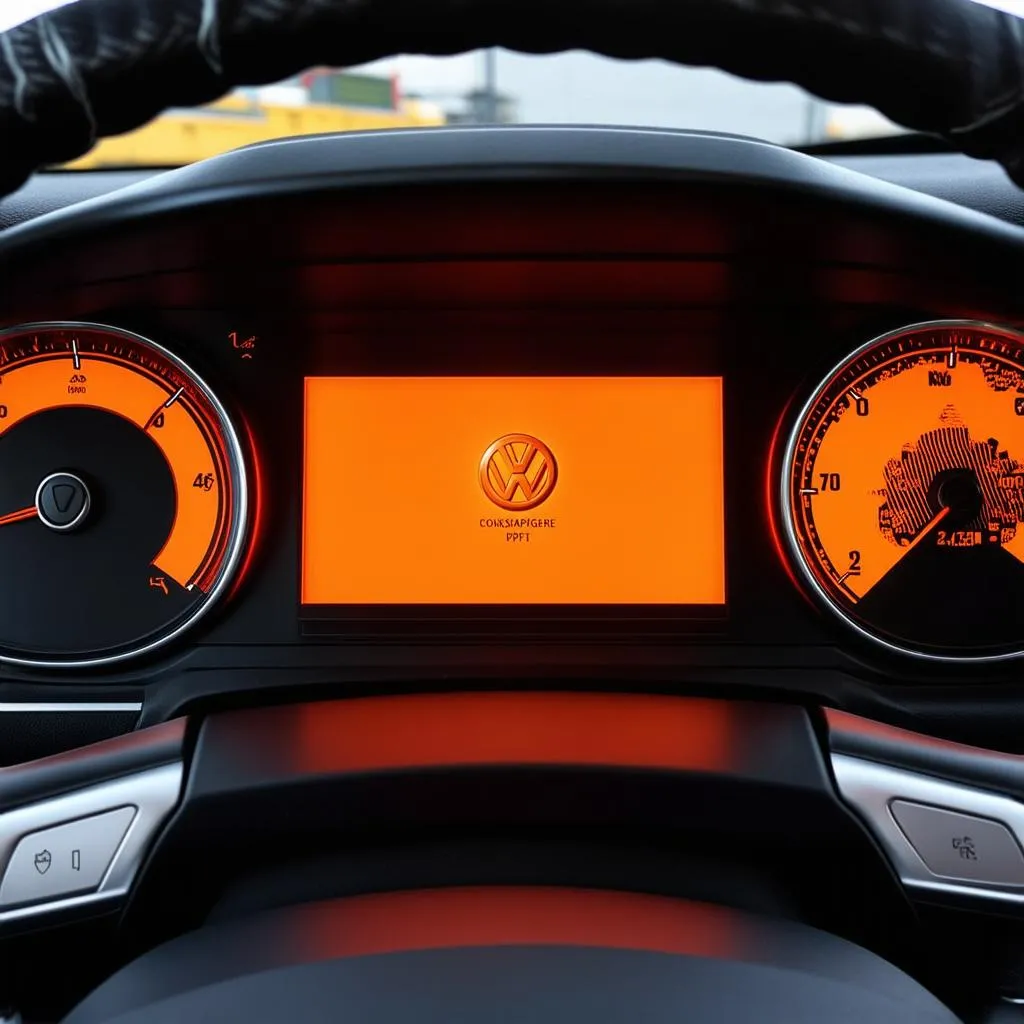Mastering VW T5 DPF Regeneration with VCDS: A Comprehensive Guide
“The check engine light is on again!” John muttered, staring at his trusty VW T5 Transporter. A familiar sinking feeling hit him – the dreaded DPF. This time, John was determined to take control. Armed with his trusty VCDS diagnostic tool, he delved into the world of DPF regeneration, eager to understand and resolve the issue himself.
Understanding the Beast: What is DPF Regeneration and Why Does it Matter?
John’s situation resonates with many VW T5 owners. The Diesel Particulate Filter, or DPF, is an essential component for reducing harmful emissions. It traps soot from the engine, but this soot needs to be periodically burned off in a process called regeneration.
Imagine the DPF as a self-cleaning oven. Over time, food residue (soot in our case) builds up. The oven needs to reach a high temperature to burn it off and stay clean. Similarly, the DPF requires specific conditions to perform regeneration, primarily high exhaust temperatures achieved during sustained driving at higher speeds.
When the Going Gets Tough: Signs Your DPF Needs Attention
Ignoring the DPF warning light is like ignoring a smoke alarm. It’s crucial to recognize the signs of a clogged DPF, which can lead to reduced performance, increased fuel consumption, and even engine damage. Some common symptoms include:
- The DPF warning light illuminates on your dashboard.
- A noticeable decrease in engine power and performance.
- The engine seems to struggle, especially at higher RPMs.
- An acrid smell from the exhaust fumes.
 VW T5 DPF Warning Light on Dashboard
VW T5 DPF Warning Light on Dashboard
VCDS: Your Gateway to DPF Control
This is where VCDS, the Volkswagen Group’s diagnostic software, comes into play. VCDS acts as a direct line of communication with your vehicle’s onboard computer, allowing you to access detailed information and functions, including DPF regeneration.
Imagine VCDS as a mechanic’s stethoscope, providing insights into your vehicle’s health. With VCDS, you can:
- Initiate a forced DPF regeneration.
- Monitor critical parameters like DPF soot load, exhaust temperatures, and regeneration status.
- Diagnose potential issues with the DPF system, such as faulty sensors.
“Knowledge is power,” John thought, feeling a sense of control returning.
Performing a VW T5 DPF Regeneration with VCDS: A Step-by-Step Guide
Before attempting a forced regeneration, it’s crucial to consult your vehicle’s manual and ensure your battery is fully charged. Here’s a simplified guide to performing a DPF regeneration using VCDS:
- Connect your VCDS interface to your vehicle’s OBD-II port.
- Launch the VCDS software and establish a connection with your vehicle.
- Select the appropriate control module for your engine (usually Engine or Diesel Engine).
- Navigate to the “Basic Settings” or “Advanced Functions” section.
- Look for an option related to “DPF Regeneration” or “Soot Mass Regeneration.”
- Follow the on-screen prompts and initiate the regeneration process.
Remember, safety first! Ensure your vehicle is parked in a well-ventilated area and allow the process to complete without interruption.
 Mechanic Using VCDS for DPF Regeneration
Mechanic Using VCDS for DPF Regeneration
Beyond Regeneration: Keeping Your DPF Healthy
Prevention is always better than cure. While VCDS offers a powerful tool for managing DPF regeneration, adopting good driving habits can significantly prolong your DPF’s lifespan.
Here are some expert tips from renowned automotive engineer, Dr. Emily Carter, author of “The Eco-Friendly Driver”:
- “Regularly drive your vehicle at highway speeds for at least 20-30 minutes to allow for passive regeneration.”
- “Avoid prolonged idling, as it prevents the engine from reaching optimal temperatures for regeneration.”
- “Use high-quality diesel fuel and engine oil specifically designed for vehicles with DPFs.”
Frequently Asked Questions about VW T5 DPF Regeneration with VCDS:
Can I drive my vehicle during a forced DPF regeneration?
It’s generally not recommended to drive during a forced regeneration. The process requires specific engine parameters and driving conditions, and interrupting it could affect its effectiveness.
How often should I perform a DPF regeneration?
Your vehicle should automatically perform regenerations as needed. However, factors like driving style and conditions can influence the frequency. Consult your owner’s manual for specific recommendations.
What happens if I ignore the DPF warning light for too long?
Ignoring the DPF warning light can lead to a severely clogged DPF, potentially causing expensive repairs or even engine damage.
Can I clean my DPF myself?
While DIY DPF cleaning kits are available, it’s generally recommended to have a qualified mechanic perform this service to ensure it’s done correctly.
Are there any alternatives to DPF removal?
DPF removal is illegal in many jurisdictions and can lead to fines or failed emissions tests. It’s crucial to adhere to local regulations and explore legal solutions for DPF-related issues.
Similar Questions You Might Have:
- What are the common causes of DPF failure?
- How much does a DPF replacement cost?
- Can I use additives to clean my DPF?
- How can I prevent future DPF problems?
Related Products:
- VCDS Diagnostic Cables
- DPF Cleaning Additives
- Replacement DPFs for VW T5
Vehicle Models Supported by VCDS for DPF Diagnostics and Regeneration:
- Volkswagen (VW) Cars and SUVs: Golf, Jetta, Passat, Tiguan, Atlas, Touareg
- Volkswagen (VW) Vans: Transporter (T5, T6), Caddy, Caravelle
- Audi Cars and SUVs: A3, A4, A6, Q3, Q5, Q7
- Audi Sports Cars: TT, R8
- SEAT Cars and SUVs: Ibiza, Leon, Ateca, Tarraco
- Škoda Cars and SUVs: Octavia, Superb, Kodiaq, Karoq
For additional insights and resources related to car diagnostics, explore our other informative articles on cardiagxpert.com.
Need Help? We’re Here for You!
Experiencing DPF woes? Don’t panic! Our team of automotive diagnostic experts is just a message away. Contact us via WhatsApp at +84767531508 for personalized assistance with VCDS setup, DPF regeneration, and any other car diagnostic needs. We’re available 24/7 to get you back on the road with confidence.
